A Hall of Mirrors: Cabala, Spiegel Der Kunst Und Natur, In Alchymia
Published by Reblogs - Credits in Posts,
A Hall of Mirrors: Cabala, Spiegel Der Kunst Und Natur, In Alchymia (1615)
Featuring four alchemical engravings by Raphael Custos — much reproduced since Carl Jung included the third as "The Mountain of the Adepts" in Psychology and Alchemy (1968) — Cabala’s leading symbol is the looking glass, which the author offers as a tool for penetrating the mysteries of alchemy and divinity. The century spanning from 1550 to 1650 saw the publication of hundreds of books with "Speculum", "Spiegel", and "Mirror" in their titles, a testament to the technology’s immense power over the European imagination. As Urszula Szulakowska describes, a belief emerged during this period that "pictures drawn according to the single-point perspective system could become a type of magical mirror". To help its readers commune with God, the "celestial looking glass", Cabala offers three graphical "mirrors" in the form of perspectival images rich with hermetic symbolism — a "Beginning" of "sapphire", a "Middle" of "pure steel", and an "End", "sprung out of these two [preceding images] perfectly". Prefacing this sequence, we find an engraving divided into three panels, titled "Mirror of Art and Nature", offering a glimpse of the alchemical journey that is to follow.
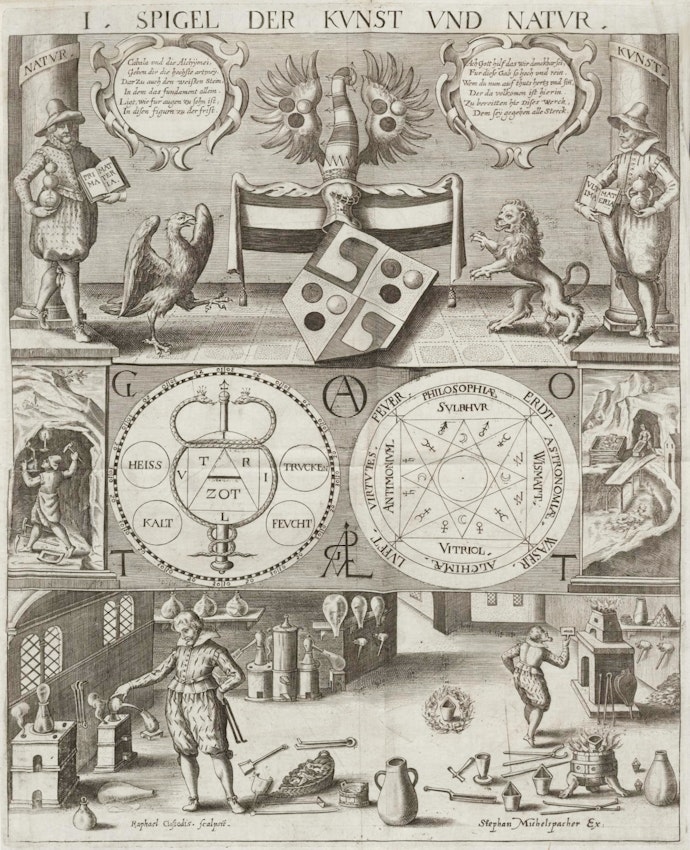
"Beginning: Exaltation" bears the armorial cabala in the general sense of a path of wisdom, not any reference to the explicitly Jewish mystical technique. A fire-breathing chimera is encircled by a Latin alchemical A-to-Z and zodiacal foursomes. Framed by the Paracelsian tria prima of Salt, Sulphur, and Mercury, a Raven, Peacock, and Phoenix rise toward the Sun — the Philosopher’s Stone of union with the Divine.
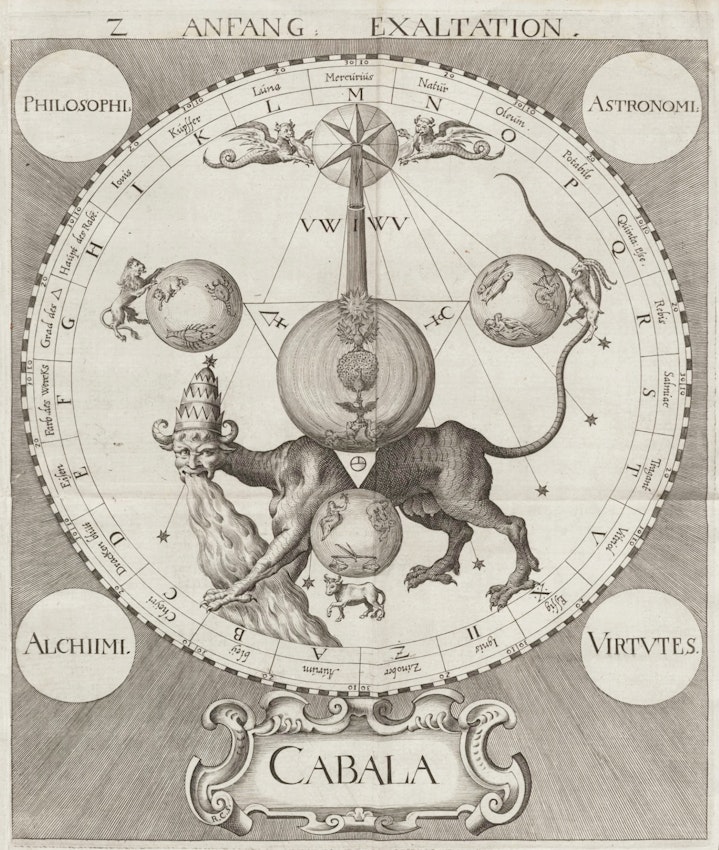
Arranged to correspond with their zodiacal rulerships, the personifications of the six other planets in "Middle: Conjunction" ascend toward Mercury, the goal of both the blindfolded gentleman and the fellow chasing the hare.
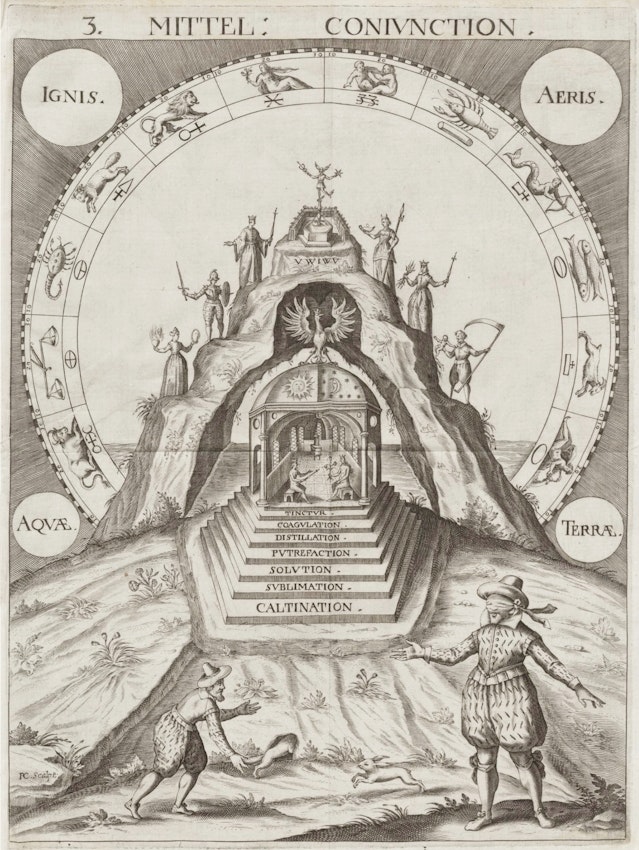
Topped by this same caduceus-bearing Mercury, Cabala’s final scene, "End: Multiplication", depicts the resurrected Christ offering the Water of Life to King/Sun and Queen/Moon, while Peg-leg Saturn and his fellow planets wave their bellows from below, and the halo-bearing dove of the Holy Spirit flies between the walled city of Jerusalem (right), the Tetragrammaton (the Hebrew JHVH, upper left), and Christ, the Fountain of Life.
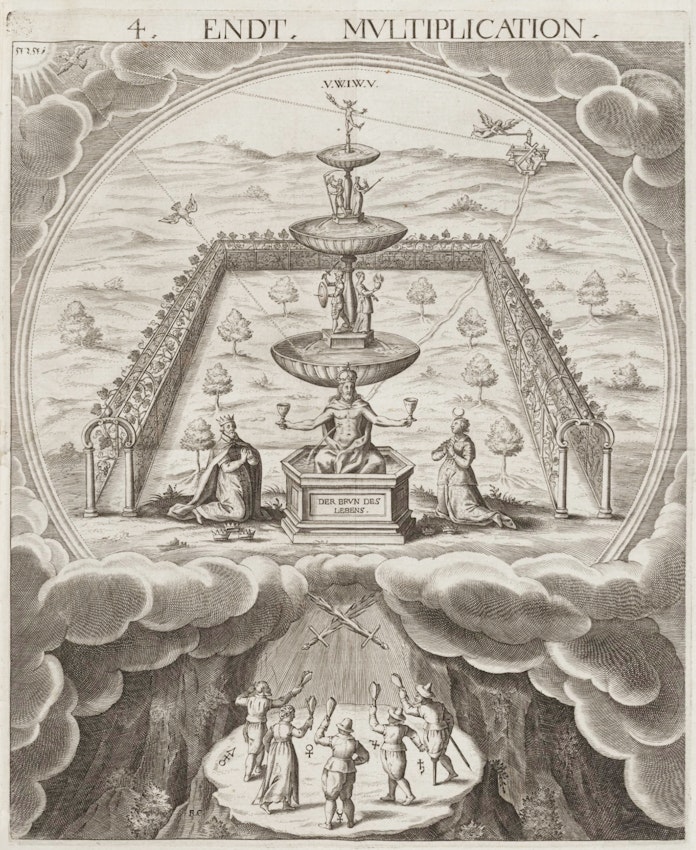
Published the next year in Latin as Cabala, Speculum Artis Et Naturae In Alchymia (1616), this translated edition contains a dedication to the Rosicrucians, absent from the German text, explicitly unveiling an inspiration behind the work. Cabala came into the world in the wake of Fama fraternitatis, a Rosicrucian manifesto whose appearance in 1614 led to hundreds of tracts either lauding or condemning its anonymous author’s call for the universal reformation of mankind. Following Cabala’s "Declaration of the most ancient stone instead of an Epilogue", a succinct and comprehensive Paracelsian discourse is offered by the "Anonymous philosopher dedicated to the fraternity", i.e., the brotherhood of Rosicrucians. Signed "paVLVS" in the cryptic manner characteristic of the brethren named in Rosicrucian tracts, the Roman numerals seem a simple — yet indecipherable — puzzle. The alchemical Discursus brevior that closes Cabala appears in only one other place: a 1615 Magdeburg text that gathers the Fama and Confessio with a suite of other writings, making it the largest of all the Rosicrucian manifestos. The anonymous creator of Cabala seems to have folded this discursus into his work, for they are exactly the same.
Cabala is often attributed to the Augsburg publisher Stephan Michelspacher. Yet the only part of Cabala’s text explicitly claimed by Michelspacher is a fawning prefatory apology to Ulm doctor Johannes Remmelin for having pirated his anatomical flapbook Catoptrum Microcosmicum (1613). Cabala’s actual author remains as elusive as "Father C.R.C." (Christian Rosenkreutz), the legendary founder of Rosicrucianism. A possible candidate for the conception and execution of Cabala is Augsburg Paracelsian physician, collector and copyist Karl Widemann, who was, through his close association with Rosicrucian champion Adam Haslmayr, deeply imbedded in the still uncircumscribed constellation of individuals who brought both the Fama fraternitatis and Confessio Fraternitatis (1615) into public circulation. Widely recognized as the most indefatigable collector and interpreter of Paracelsus’ original writings, there was no other person in Europe who had access to as rich a trove of Paracelsian work, and, through his friendship with Haslmayr, unfettered access also to the highly charged original writings of the Rosicrucians. Perhaps there remains some undetected speculum that will one day bring him or another mercurial brother of the Rosy Cross to light as Cabala’s true author.
Text by Kevin Dann
Published
March 15, 2022
Medium
Theme
Style
Epoch
Tags
 | Source |
 | Underlying Work Rights | |
Digital Copy Rights | ||
 | Download | Right click on image or see source for hi-res |

Want this image on your wall?
We’ve the image from this post in our online prints shop—all custom made to the highest standards, framed or unframed, and shipped to your door.
Related Collections

Film /

Books /
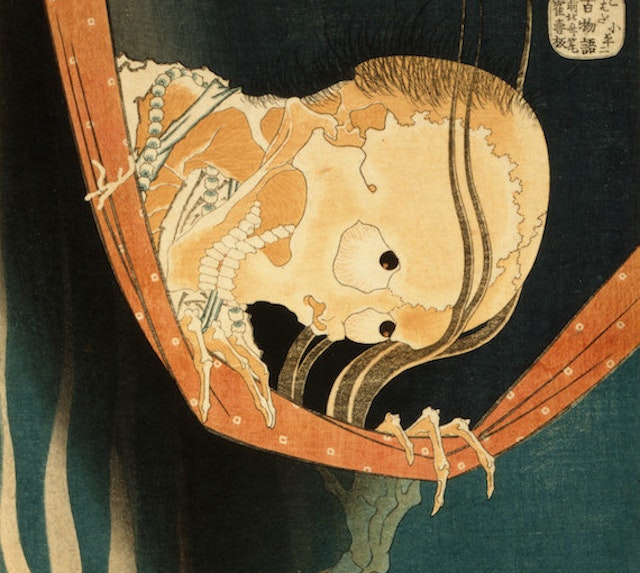
Images /
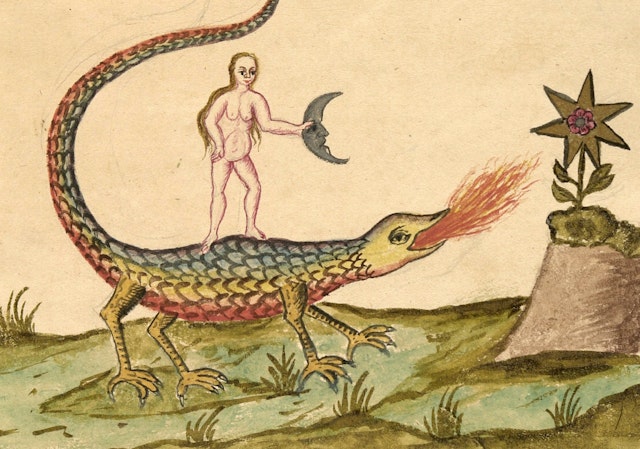
Images /

Books /

Images /
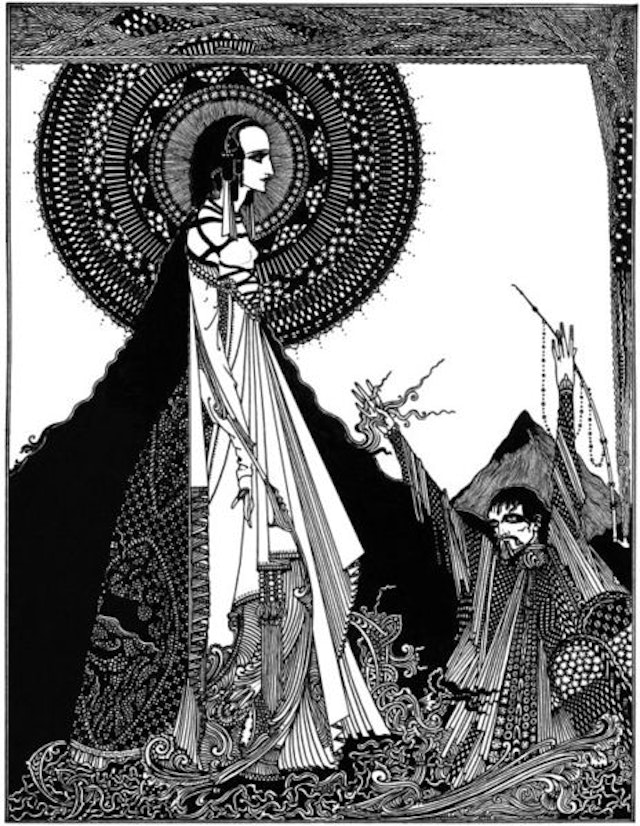
Images /

Film /
If You Liked This…

Get Our Newsletter
Our latest content, your inbox, every fortnight

Prints for Your Walls
Explore our selection of fine art prints, all custom made to the highest standards, framed or unframed, and shipped to your door.

The majority of the digital copies featured are in the public domain or under an open license all over the world, however, some works may not be so in all jurisdictions. On each Collections post we’ve done our best to indicate which rights we think apply, so please do check and look into more detail where necessary, before reusing. Unless otherwise stated, our essays are published under a Creative Commons Attribution-ShareAlike 3.0 license. Strong Freedom in the Zone.
The Public Domain Review is registered in the UK as a Community Interest Company (#11386184), a category of company which exists primarily to benefit a community or with a view to pursuing a social purpose, with all profits having to be used for this purpose.

